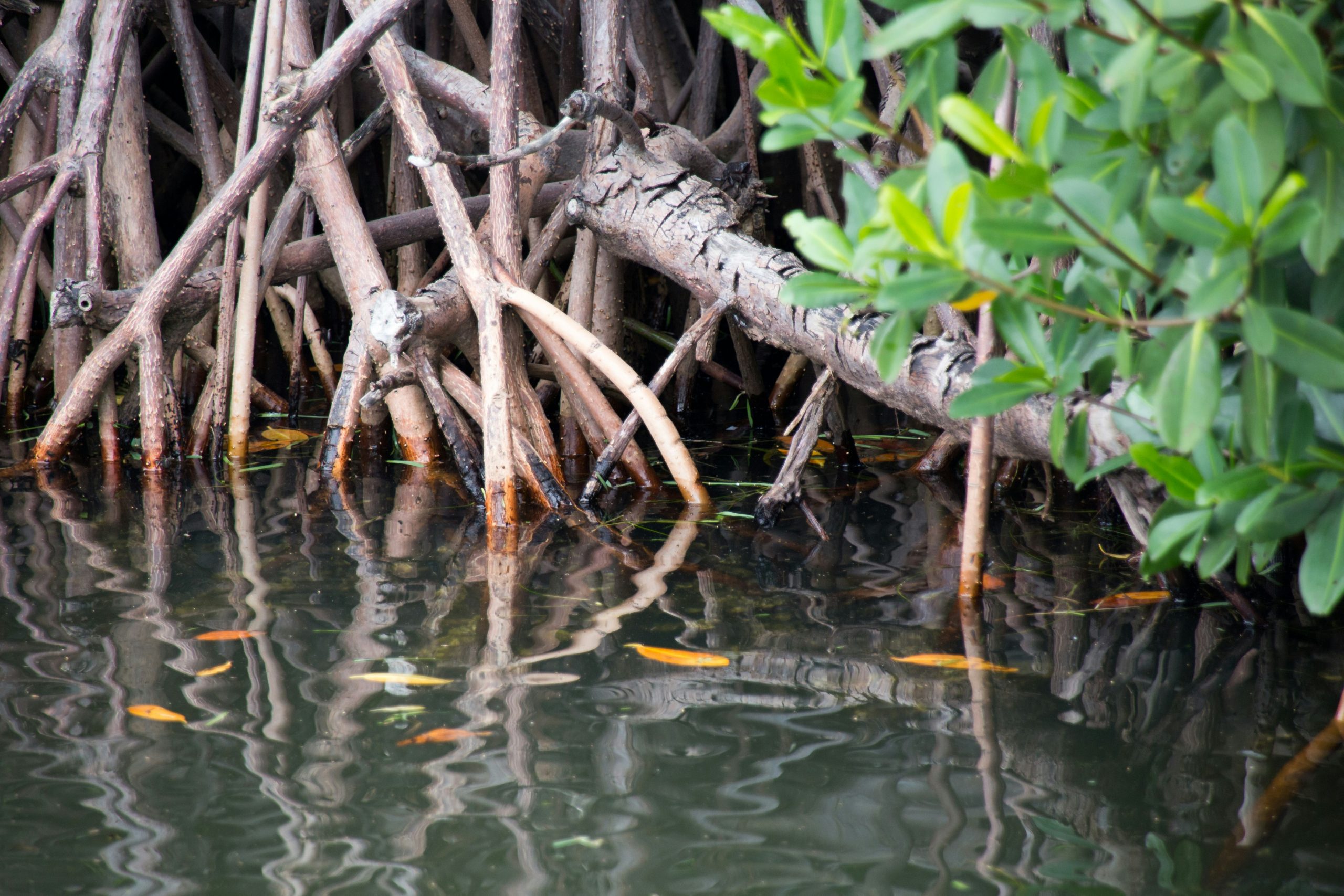Interested in our biodiversity credit offering?
Biodiversity loss
Bridging the funding gap with biodiversity credits

Biodiversity COP16 will resume in Rome in late February 2025, focusing on resource mobilization strategies and financial mechanisms. The decisions made during these negotiations will play a crucial role in shaping global efforts to combat biodiversity loss.
As the biodiversity funding gap widens, we need to find new ways to mobilize private capital and integrate nature-positive investments into mainstream economic activities. Biodiversity credits appear to be an innovative instrument that could help finance long-term conservation and restoration efforts.
With international frameworks, national policies, and pioneering organizations like Removall driving change, biodiversity credits can help converge toward a sustainable future where ecosystems thrive, businesses prosper, and communities benefit from a healthier planet.
Biodiversity loss is accelerating at an alarming rate
Biodiversity is the foundation of life on Earth, providing essential ecosystem services such as pollination, climate regulation, and water purification. However, global wildlife populations have plummeted by an average of 69% over the past 50 years. The degradation of ecosystems continues at an exponential pace, with over one million species currently at risk of extinction. The destruction of natural habitats, overexploitation of resources, pollution, and climate change are accelerating biodiversity loss at an unprecedented rate.
The consequences of this crisis extend beyond nature. Biodiversity loss threatens food security, water availability, human health, and economic stability. More than half of the world’s GDP—around $44 trillion—is moderately or highly dependent on nature. Scientists warn that without immediate action, we may reach irreversible ecological tipping points that could drastically alter the planet’s ability to sustain life.
The biodiversity funding gap: a growing crisis
Despite the urgent need for conservation and restoration efforts, there is a massive shortfall in biodiversity funding. The current annual biodiversity financing gap is estimated to be around $700 billion. The Kunming-Montreal Global Biodiversity Framework (GBF) has set ambitious financial targets, including mobilizing at least $200 billion per year from all sources to support biodiversity conservation efforts by 2030. This also includes a commitment to redirect at least $500 billion per year away from environmentally harmful subsidies towards positive biodiversity outcomes.
While governments, philanthropies, and international organizations are contributing to biodiversity financing, these sources remain unstable and insufficient. Recent geopolitical shifts, such as the reduction of USAID biodiversity programs, further exacerbate the problem. This fragmented funding landscape makes it hard for developing countries to access funding capital, increasing transaction costs.
In the private sector, there is growing awareness of biodiversity-related risks, such as regulatory, physical, reputational and financing risks. Companies are now implementing biodiversity strategies at a corporate level, supported by the emergence of regulatory and voluntary reporting frameworks such as the Corporate Sustainability Reporting Directive (CSRD), the Taskforce for Nature-related Financial Disclosure (TNFD) or the Science-Based Targets for Nature (SBT-N). However, private sector engagement to fund nature remains insufficient. The challenge lies in creating scalable and reliable financial mechanisms that can mobilize substantial capital for biodiversity protection and restauration.
Biodiversity credits: a market-based solution to fund nature
Biodiversity credits have emerged as a promising mechanism to bridge the funding gap. These credits function as economic instruments that assign a quantifiable value to positive biodiversity outcomes.
According to the Biodiversity Credit Alliance, a biodiversity credit is “a certificate that represents a measured and evidence‑based unit of positive biodiversity outcome that is durable and additional to what would have otherwise occurred”. Numerous biodiversity standards have emerged in recent years, reflecting the intricate diversity of biodiversity projects design. The market is structuring with various working groups joining forces such as the Biodiversity Credit Alliance, the World Economic Forum, and the International Advisory Panel on Biodiversity Credits.
The Kunming-Montreal Global Biodiversity Framework (GBF), signed by 196 nations, has set ambitious targets to halt and reverse biodiversity loss by 2030. Biodiversity credits align with these goals by incentivizing private investment in nature-positive projects. According to market forecasts, biodiversity credits could become a multi-billion-dollar industry within the next decade.
Demand-drivers are numerous:
- provide access to ecosystem services as an input,
- contribute beyond its own impacts,
- offer products bundled with nature recovery,
- or take responsibility for unmitigated biodiversity impacts.
Bundling carbon credits with biodiversity credits will amplify nature-positive outcomes while accelerating the growth of the biodiversity credit market. Credit stacking—the practice of generating both carbon and biodiversity credits within the same geographical area—will unlock additional funding streams for project developers, enhancing financial viability and incentivizing more holistic ecosystem restoration efforts.
Scaling biodiversity credits: global, regional, and local initiatives
To maximize impact, biodiversity credit systems must operate at multiple levels—from global frameworks to national and local policies. Several international and regional initiatives are paving the way for a structured biodiversity credit market:
International Standards and Frameworks: Innovative standards such as Verra Nature Framework, Plan Vivo Nature, and Cercarbono are developing high-integrity biodiversity credit methodologies to help finance biodiversity restauration or conservation projects globally. These frameworks focus on measurement, reporting, and verification (MRV) to maintain transparency and accountability in biodiversity projects. Various pilot projects are currently ongoing the certification process. The number of international biodiversity credit issuance will grow exponentially in the coming years.
European Leadership and Policy Support: Biodiversity credits are gaining traction in Europe. European Commission President Ursula von der Leyen has expressed strong support for integrating biodiversity into financial and regulatory frameworks. European markets are exploring biodiversity credits as part of the Green Deal and the EU Taxonomy, aiming to encourage corporate investment in biodiversity.
UK and France are paving the way for local implementation: At the national level, countries like the UK and France are implementing biodiversity credit schemes. The UK’s Biodiversity Net Gain (BNG) policy mandates that all new developments must deliver at least a 10% net increase in biodiversity. France has launched the National Biodiversity Strategy (SNB) and the SNCRR (Sites Naturels de Compensation, de Restauration et de Renaturation) to integrate biodiversity credits into land-use planning and economic activities. The French scheme will include both a compliant and a voluntary scheme.
Removall: leading the charge in biodiversity credit markets
Removall is at the forefront of the biodiversity credit revolution, pioneering projects that deliver measurable ecological benefits. By leveraging cutting-edge monitoring technologies and strong partnerships, Removall develops high-integrity biodiversity credit projects that restore degraded ecosystems and protect critical habitats.
Through its initiatives, Removall is creating tangible opportunities for businesses and investors to contribute to nature-positive outcomes. By participating in biodiversity credit markets, corporations can not only meet their sustainability commitments but also drive meaningful change in global.
- WWF (2022). Living Planet Report 2022: Building a nature-positive society.
- IPBES (2024). The nexus assessment: Assessing the interlinkages among biodiversity, water, food, and health.
- IPBES (2024). Transformative change: Policy options for biodiversity and sustainability.
- World Economic Forum (2023). Nature finance and biodiversity credits: A private sector roadmap to finance and act on nature.
- World Economic Forum (2023). Biodiversity credits: Demand analysis and market outlook.
- IAPB (2024). Framework for high-integrity biodiversity credits.
- Boston Consulting Group (BCG). (2024). Corporate commitment meets nature: The reality of biodiversity credits.
Article written by :

Côme Falque
Project Manager - Innovative Environmental Assets




